#cankerworm moth
Explore tagged Tumblr posts
Text
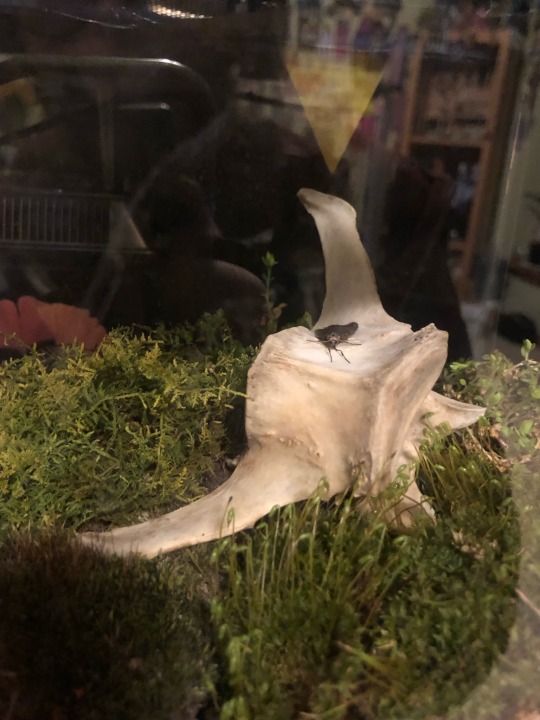

It was 70 the other day & some moths came out too early.. put him in my TERRARIUM!
3 notes
·
View notes
Photo
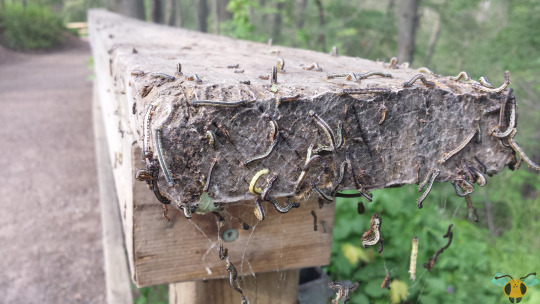
Fall Cankerworms - Alsophila pometaria
Do Inchworms like to party? Absolutely! Especially if they have other Inchworms around them, and there’s quite a few here! These are the partygoers that eat all the snacks without heed.
Truthfully speaking, these Caterpillars are in fact Inchworms as they belong to the family Geometridae, or Geometrid Moths. They move in a looping motion, pulling their body forward and creating an arch along their back as they do so. Then they straighten out and move forward again, inching their way to their destination. If you look closely, a few partygoers here are in the process of arching their way across this wooden observation fence. The adult Moths conversely are more known for the wave-like patterns that travel across their wings. We’ll return to the adults shortly; for now, let’s focus on the aggregation of Cankerworms in the forest. How they all wound up on the wooden fence is anyone’s guess, especially since it is devoid of leaves to defoliate. It’s possible they may have hatched on the fence itself, being placed their by a female Fall Cankerworm Moth thinking it was some type of hardwood tree. However, it’s more likely that these individuals are descending to pupate. You see, based on their appearance, they’ve been active for some time now. Upon hatching, Cankerworms begin their lives colored green, gradually darkening with each molt as they grow bigger, just as these have.
They may darken to black from instar to instar, but while they wriggle around they never lose the white bands that trail from head to toe. The band isn’t as visible when green, and neither are the Caterpillars for that matter. They use their green colors to their advantage by straightening their body and mimicking twigs if they feel a threat nearby as they feast at their tree. They’re well anchored thanks to their rear prolegs, so maintaining this posture isn’t an issue. After eating, defoliating, and molting, these Caterpillars find their way to the soil and pupate. The forest finds some peace in the meantime as the voraciousness of these Caterpillars has the potential to be devastating if left unchecked by their predators (both from birds and insects). As the seasons pass and autumn arrives, it is found they these Cankerworms don’t overwinter as pupae. The emerge as grey-colored Moths and seek out the best trees to place eggs and ready the next generation of Caterpillars for the winter. It may sound straightforward, but the female Cankerworms emerge without wings (my sentiments on that were covered in a Bagworm post), making location-seeking much more urgent! Next time you’re in a forested area where these wrigglers can be found, return in the autumn months and look for stout, grey, wide-bodied wingless Moths (grey-winged, male Moths may be nearby). It’s a strange sight, but it’s just another part of this insect’s journey. And being wingless does have some advantages: males come to you, less energy burned on flight and the potential of parthenogenesis (reported in some populations).
Picture was taken on June 10, 2017 at the Royal Botanical Gardens with a Samsung Galaxy S4.
#jonny’s insect catalogue#ontario insect#caterpillar#fall cankerworm#fall cankerworm moth#lepidoptera#moth#geometrid moth#insect#royal botanical gardens#june2017#2017#nature#entomology#invertebrates#arthropods#animals#photography
4 notes
·
View notes
Text



annoying little asshole season
#cankerworms#inchworms#entomology#insects#moths#memes#moth memes#public nuisance#nature#autumn#bugs#tw bugs#cw insects
1 note
·
View note
Text

What I believe to be, a Fall Cankerworm (Alsophila pometaria) moth caterpillar, aka an Inchworm. Only picture that came out at all in the weird woodlot light...
#nature#my photography#moth caterpillar#nature photography#caterpillar#wildlife photography#inchworm#woodlot#insect larvae#backyard nature#insect
9 notes
·
View notes
Text
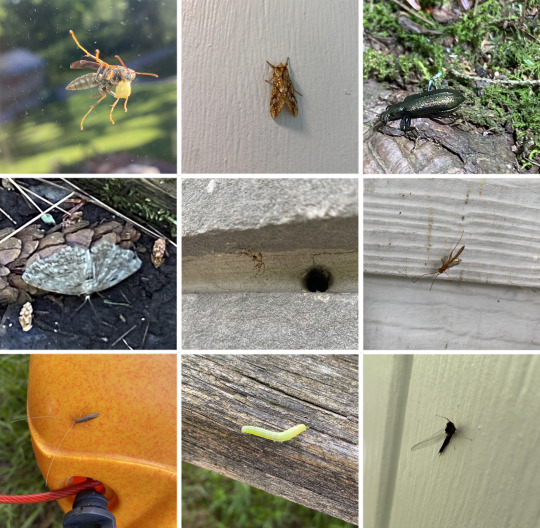
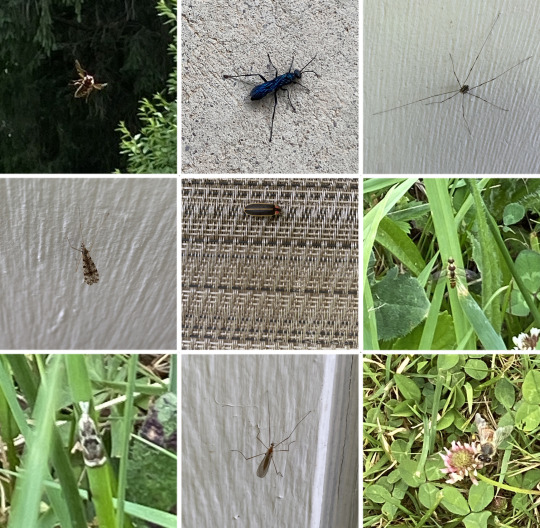

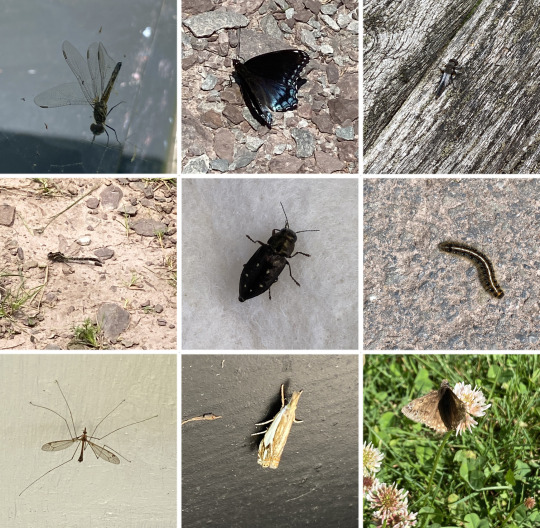
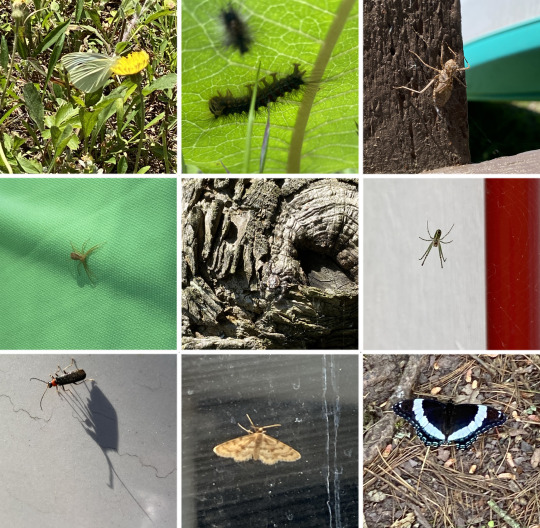
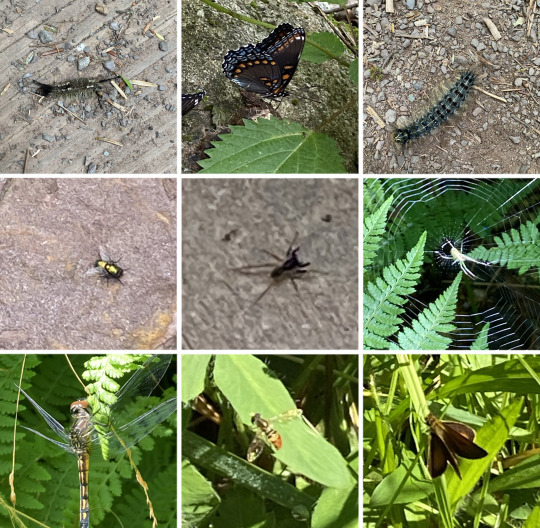
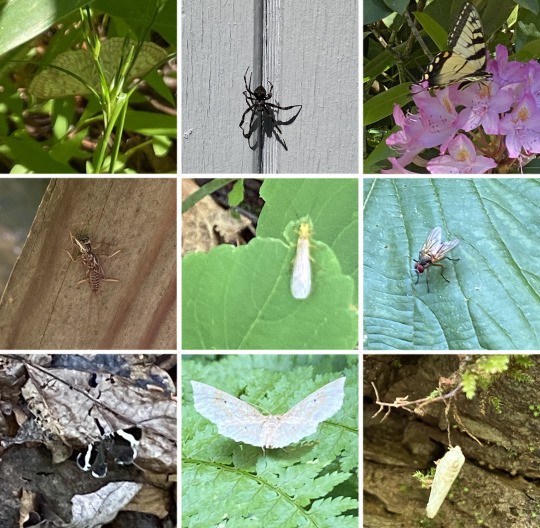
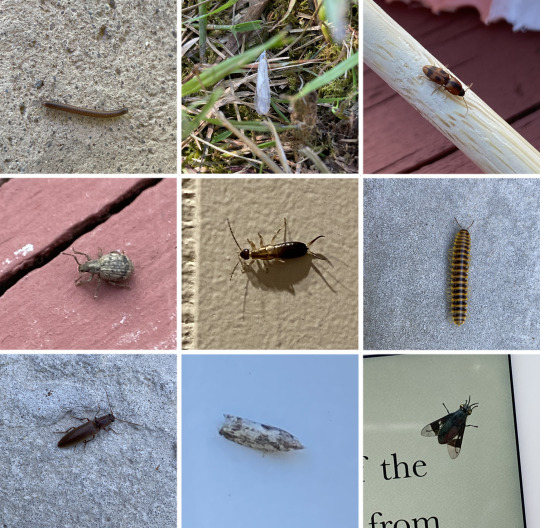
Zuzu's bug-ventures June 8-16, 2024 (insects/spiders from a state park in northeast Pennsylvania) (re-uploading because of file size issues)
I figured I would make a collage after getting so many! A couple of the above photos have duplicates, so all in all I believe I found 65 distinct kinds. I'm still working to ID some of them, but all the ones I think I have ID'd are under the cut. Anyway, it was truly a fun experience. Maybe next time I'll have a camera that isn't a shitty phone!
You can see full size photos of most of these here.
IDs under the cut
Just a note, I'm not 100% on any of these. My IDs are speculative based on google searches, reddit, and so-on. If you think something is wrong, PLEASE let me know!
Also, each image has 9 insects/spiders in a grid. I will be referring to each grid of 9 insects/spiders as a single image below, and identifying all 9 based on rows within the image. If that makes sense. Hopefully it does!
Image 1 (first row left):
Top row (from left to right): Northern paper wasp (I'm told it's carrying caterpillar meat); Hickory tussock moth; Ground beetle of some kind (could not ID)
Middle row: Fall cankerworm moth; Barn spider; Red ichneumon wasp
Bottom row: Long-horned caddisfly; Copper underwing caterpillar; Brush-legged mayfly
Image 2 (first row right):
Top row: Very loud very big bee (could not ID); Common blue mud dauber wasp; Harvestman spider
Middle row: Limoniid crane fly; Firefly; Hoverfly
Bottom row: Elegant grass-veneer moth; Tiger crane fly; Western honey bee
Image 3 (second row left):
Top row: Two-spotted bumble bee; Marsh fly; Yellow-collared scape moth? (could not ID)
Middle row: Wolf spider (male); Macaria moth; Tipula lunata (type of crane fly)
Bottom row: Robber fly; Brown-toed forest fly; Virginian tiger moth
Image 4 (second row right):
Top row: Blue dasher dragonfly? (could not ID. Dead in spider web); White admiral butterfly; Chalk-fronted corporal dragonfly
Middle row: Clubtail dragonfly? (could not ID); Hemlock borer beetle; Eastern tent caterpillar
Bottom row: Another Tipula lanata crane fly; Double-banded grass-veneer moth; Horace's duskywing butterfly
Image 5 (third row left):
Top row: Cabbage white butterfly; Spongy moth caterpillar; Dragonfly exoskeleton (could not ID)
Middle row: White-striped running crab spider; Jumping spider (could not ID, but yes there is a spider in this photo!); Orchard orbweaver spider
Bottom row: Soldier beetle; Fortunate wave moth; Another white admiral butterfly
Image 6 (third row right):
Top row: Tussock moth caterpillar; A third white admiral butterfly (this is the last one I promise! They just have so much variation!); Another spongy moth caterpillar
Middle row: Common green bottle fly; Eastern parson spider; Another orchard webweaver spider
Bottom row: Blue dasher dragonfly (possibly female); Calligrapher fly; Dun skipper butterfly
Image 7 (last row left):
Top row: Another fortunate wave moth? (could not ID); Orbweaver spider of some kind (Could not ID); Eastern tiger swallowtail butterfly
Middle row: Stonefly exoskeleton; Ontario sallfly; Lesser house fly
Bottom row: White-striped black moth; Pale metarranthis moth (this one is my favorite find); White planthopper? (could not ID)
Image 8 (last row right):
Top row: Millipede; Immaculate grass-veneer moth; Flat wireworm beetle
Middle row: Twobanded Japanese weevil (WEEVIL TIME!!); Earwig; Bob's yellow and black millipede
Bottom row: Click beetle; Sod webworm moth? (could not ID); Deer fly
And that's it! Again, let me know if I made mistakes or if you know any of the ones I couldn't ID.
#insects#insect photography#bugs#insect identification#tw insects#tw spiders#my photos#memories;#Zuzu's bug ventures
11 notes
·
View notes
Text
10/10
geometrid moths (family Geometridae)

The geometer moths are moths belonging to the family Geometridae of the insect order Lepidoptera, the moths and butterflies. Their scientific name derives from the Ancient Greek geo γεω (derivative form of γῆ or γαῖα "the earth"), and metron μέτρον "measure" in reference to the way their larvae, or inchworms, appear to measure the earth as they move along in a looping fashion. A very large family, it has around 23,000 species of moths described, and over 1400 species from six subfamilies indigenous to North America alone. A well-known member is the peppered moth, Biston betularia, which has been subject of numerous studies in population genetics. Several other geometer moths are notorious pests.
The caterpillars are accordingly called "loopers", "spanworms", or "inchworms" after their characteristic looping gait. The cabbage looper and soybean looper are not inchworms, but caterpillars of a different family. In many species of geometer moths, the inchworms are about 25 mm (1.0 in) long. They tend to be green, grey, or brownish and hide from predators by fading into the background or resembling twigs. Many inchworms, when disturbed, stand erect and motionless on their prolegs, increasing the resemblance. Some have humps or filaments, or cover themselves in plant material. They are gregarious and are generally smooth. Some eat lichen, flowers, or pollen, while some, such as the Hawaiian species of the genus Eupithecia, are carnivorous. Certain destructive inchworms are called cankerworms.
Many geometrids have slender abdomens and broad wings which are usually held flat with the hindwings visible. As such, they appear rather butterfly-like, but in most respects they are typical moths; the majority fly at night, they possess a frenulum to link the wings, and the antennae of the males are often feathered. They tend to blend into the background, often with intricate, wavy patterns on their wings. In some species, females have reduced wings (e.g. winter moth and fall cankerworm). Most are of moderate size, about 3 cm (1.2 in) in wingspan, but a range of sizes occur from 10–50 mm (0.39–1.97 in), and a few (e.g., Dysphania species) reach an even larger size. They have distinctive paired tympanal organs at the base of the abdomen (lacking in flightless females).
3 notes
·
View notes
Text



saw a moth today! iNat tells me it's a fall cankerworm moth.
ID: 3 pictures of a beige moth with folded wings and feathered antennae. End ID.
4 notes
·
View notes
Text
Well, #Winnipeg (and #Manitoba) just sprayed the Trees a few hours ago.
That should eliminate most of the Cankerworms that were on any tree since MARCH.
And about the OCTOBER Cankerworms too, those are the ones that lay eggs that become the Spring Cankerworms we deal with from June - August every year.
Also Cankerworms become known as "GEOMETER MOTHS". strange name.
0 notes
Text


Puppy uncrinkles their wings
Update: Probably a spring cankerworm moth (Paleacrita vernata)
1 note
·
View note
Photo

Alsophila pometaria, the fall cankerworm, is a moth of the family Geometridae. It is found in North America from Nova Scotia west to Alberta, south to Colorado and California. (at Arlington, Virginia) https://www.instagram.com/p/CnfSl0kpHwgnwfVJrNPtNpsB-lJ4NwzaGF78Z00/?igshid=NGJjMDIxMWI=
0 notes
Text
Cankerworm moths and bagworms are so cool but I going to jump off a bridge at this rate
Moths: :D
Wingless moths: D:
4 notes
·
View notes
Text
@scolop98 submitted: Some pictures of what I’m fairly certain is a wingless moth from last spring! Do you have any idea for a more specific ID? From western [removed] (please remove location! Thanks!)



I think you submitted this already! I've seen at least the middle pic before. But it appears to be a spring cankerworm, which is a type of geometer. And yes, it's a flightless female! :)
#bugs#submission#animals#insects#moth#geometer moth#spring cankerworm#flightless female#wingless female
46 notes
·
View notes
Photo



Eastern Tent Caterpillar and Forest Tent Caterpillar - Malacosoma americana & Malacosoma disstria
At first glance, these two insects might be mistaken for each other, leading to much confusion and speculation over how worried one should be over the surrounding foliage! So, which insect is which? Picture 1 gives a glimpse at the Eastern Tent Caterpillar while Pictures 2 and 3 are of the Forest Tent Caterpillar. They easiest way to tell them apart is to look at the line going across their backs from head to abdominal tip. The Eastern Caterpillar’s dorsal line is a firm, solid line while the Forest Caterpillar’s line is separated across body segments. Furthermore, the Forest Caterpillar’s body has the appearance of greater predominance of blue while the Eastern Caterpillar’s blue is more obscured by the hairs (with golden hues) dotted along the body. Finally, the Eastern Caterpillar has a dark colored face and the Forest Caterpillar has a bright face of a bluish hue. Those are the physical differences, but there are also differences in their nesting habits which are discussed below. For now, whichever Caterpillar you find on your travels, handle with care as the hairs have the potential to be irritating on contact with skin. Nothing happened to me when I handled the Forest specimen, but I still advice caution. When it comes to hairy Caterpillars and their effects, there’s a world of difference between Woolly Bears and White-Marked Tussock Caterpillars! The insects of today’s post are somewhere in the middle. Now about those nesting habits...
When it comes to Tent Caterpillars, they are quite social and tend to group up within silken structures (sadly not seen here) near to the foliage they eat. Unlike Spindle Moth Caterpillars which use their silk to bind plants together, Tent Caterpillars use available structures on trees and plants as foundations foor their silk. Eastern Caterpillars spin true tents to live in that are among the largest within Lasiocampidae (a Moth family branch), while Forest Caterpillars create mats and paths with their silk, lining trees with that for adhesion while they feed. The former do share some habits of nest construction with the aforementioned Spindle Caterpillars: build it with sunlight in mind to ensure beneficial heat, and use the nest to avoid predation. However, these Caterpillars here may have gotten lost or fell from their tree. What you see in the pictures before you isn’t the norm, which tends to be outbreaks that congregate on foliage, leading to voracious feeding! Isolation tends to happen when it’s time to pupate (grouping up while in a vulnerable state would just be an invitation for a hungry predator) or if individuals fall from a tree when silk production thins out , especially for the Forest Caterpillar. Silk may thin out temporarily, but on the final instar, every bit of silk that was conserved goes into cocoon production.
The Forest Tent Caterpillar’s pictures were taken on July 2, 2016 in Wasaga and the Eastern Tent Caterpillar’s picture was taken June 10, 2017 at the Royal Botanical Gardens; both insects were captured with a Samsung Galaxy S4. Next week, a third Caterpillar making a guest appearance in the Eastern Tent Caterpillar’s picture (the Fall Cankerworm) will be explored.
#jonny’s insect catalogue#ontario insect#caterpillar#eastern tent caterpillar#forest tent caterpillar#eastern tent caterpillar moth#forest tent caterpillar moth#tent caterpillar#moth#lepidoptera#insect#wasaga#royal botanical gardens#july2016#2016#june2017#2017#nature#entomology#fall cankerworm#invertebrates#arthropods#animals#photography
5 notes
·
View notes
Photo
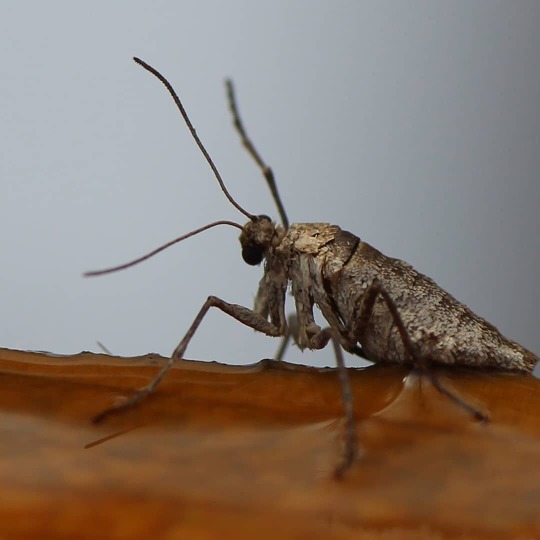
Fall Cankerworm Moth (Alsophila pometaria) on the Lynn Valley Trail, December 2018. The first picture is the wingless female and the second picture is the winged male moth if the same species. The eggs of this species are laid in late Fall or early Winter and hatch in the Spring. . . . . . . . #nature #ontario #fallcankerworm #cankerworm #alsophila #geometridae #mothsofinstagram #moth #mothphoto #ontariomoths #mothsofcanada #cwfphotoclub #macrophotography #macronature #norfolkwild #blognorfolk #lynnvalleytrail (at Lynn Valley Walking Trail) https://www.instagram.com/p/CI0J3wagEt2/?igshid=5ltmh1n8x61a
#nature#ontario#fallcankerworm#cankerworm#alsophila#geometridae#mothsofinstagram#moth#mothphoto#ontariomoths#mothsofcanada#cwfphotoclub#macrophotography#macronature#norfolkwild#blognorfolk#lynnvalleytrail
1 note
·
View note
Text

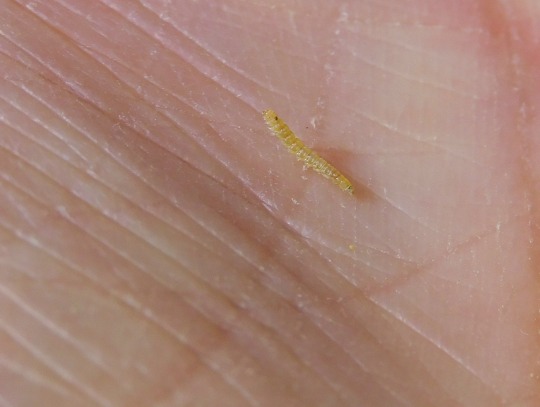
What I take to be a Fall Cankerworm (Alsophila pometaria) caterpillar of a moth of the family Geometridae. Since the skin on my palm is not made of tire tread, you can an idea how small this wriggler is...
0 notes
Photo

Female Fall Cankerworm Moth Alsophila pometaria Source: Here
127 notes
·
View notes